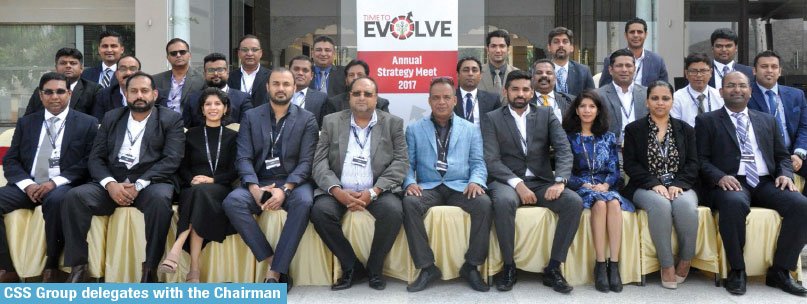LinkedIn? There’s no denying that it is here to stay as the professional business networking platform. For many it’s the key to professional success and for some, an essential element for their job search. However for others, especially companies, LinkedIn can be a bit of a puzzle. The tools presented often aren’t used to their fullest, especially by companies but also individuals. Maybe it’s because it’s not as fun as Instagram, not as entertaining as Twitter, not as addictive as Facebook.
If you’re someone who has yet to grasp the potential or even dip your toes into the LinkedIn pool, don’t fret. Even professional marketers can struggle to find content relevant to a LinkedIn audience. If the audience is understood then the potential reach for LinkedIn is massive with 500 million users spread across the globe in 200 countries.
Over the years LinkedIn has evolved from a simple “Facebook for business” to a platform for spreading industry knowledge and expertise, also as a key tool for recruiters, and those in the midst of a hunt for new employment.
Therein lies the challenge for achieving desirable post results; what is it that appeals to your professional audience? Luckily, through the experience of others there has been some things learned that can be taken as general guidance.
CREATE A COMPANY PAGE
Does your company have a page? No, why not? With a company page your employees will be able to connect their personal profiles to your company profile. It’s also a clear avenue of spreading the word of your brand. You can gain brand followers that you might not have expected to reach and through your employee profiles when other LinkedIn users view their professional experience section and activity.
SHOW YOUR BRAND PERSONALITY
LinkedIn is obviously geared towards business related content. But that doesn’t mean your company’s activity needs to be a bore. Create posts and campaigns that engage an audience. Define your brand’s personality, and I don’t mean a vision or a mission statement. I’m talking about… make your brand a “person”, give it the characteristics that you’d want it to have if it is a living and breathing entity.
Perhaps the most simple but effective posts for follower engagement is to give an “insider’s view”. Show what’s on the inside of your business and give a peek at the teams and what they do; show them
at work.
SHARE KNOWLEDGE
Engage in group postings, Pulse posts, or simple status updates that allow you to share your knowledge. On a personal level you don’t need to be the CEO of a Fortune 500 company to share knowledge or have input. Nor does your company need to be a large multinational to have engaging content that can be useful for others seeking the knowledge your business can share through a company page.
TIMING MATTERS
For posts to have a far reach and strong engagement, and this is true of all social networks, the timing of clicking the “Post” button is of prime importance. LinkedIn isn’t the same as Facebook so not only is the content of a different nature but so are the peak times of usage. LinkedIn users are (ideally) busy professionals who aren’t idling away hours scrolling through their newsfeed. For LinkedIn, users tend to be most active in the hours just before work, during lunch, and just after the work day finishes.
On another note, with the exception being a tweet storm, posts should be spaced out to allow followers to see and digest the content. Too many posts in rapid succession can hurt engagement rates.
PROFESSIONAL POSTS
Brand messaging on LinkedIn needs to reflect the professionalism of the social network. Clickbait won’t help you on LinkedIn. Be honest about your content. In fact it’ll probably hurt your communication efforts more than anything if people find your headline to be misleading
However, that doesn’t mean it’s clear to post content that’s 99% industry jargon. Moderation is key here. Communicate and display your brand personality but don’t force readers to put effort into reading your posts like it’s their job. Keep it short and adequate for easily consumable content for busy professionals on the go.
EMPLOYEE ENGAGEMENT
Your organization is full of brand ambassadors. Who are they? Your employees. By adding your company
to their profile they will be recipients of the company messaging, so encourage employees to show where they work in their profile details.
Also employees already have a connection to the company and have been shown to be more likely to like and share company published content. This can be a great boost to your company’s post reach and it also holds the possibility of assisting recruitment efforts by increasing the appeal of your company to job seekers. The further reach you have the more likely your posts will reach the eyes of decision makers and those who have the power to determine what a company will and will not buy.
However, there are some challenges to this. Employee engagement is the least controllable element of a strategic LinkedIn plan. Some employees might not be on LInkedIn and some uninterested. I know I’ve heard a few times, “LinkedIn is boring.” Even once I was told this by a person interviewing for a Social Media Manager position (Tip: Don’t do that). This is an obstacle that I’ve had the experience of dealing with, but eventually some of the individuals who didn’t hold the slightest interest for LinkedIn are now heavily engaged with the network. What it took was some education on what LinkedIn is, how it works, and what can be in it for the user (some good old WIFM) by having and using a profile.
On the other hand some employees have a different opinion of LinkedIn and extract value from the individual business leaders they follow and the posts from companies (like yours) that help them perform better for the benefit of your business. These are the types of individuals who can
help educate those who are resistant
to LinkedIn and maybe just don’t quite understand it can be for everybody and not just CEO’s and Directors.
On a final note, remember that LinkedIn has a very different tone than other social networks. Both individuals and companies need to learn how to differentiate LinkedIn from other social media platforms. Relevant content can boost engagement and increase for established companies, or even create an audience for newer businesses. Tailor your content to the platform and the audience you want
to reach.
(Contribution : FPS International)
 Being only a short time since the dawn of the New Year prompts thinking about, and analysing, the eventful days we have had during the past year. Having all of you alongside certainly ensured that it was a great journey throughout 2017. The uncertainty of the overall global economy meant we had many ups and downs, throughout the year, but we managed to sail auspiciously ahead. We made some commendable achievements, notably with our expansion of operations in the Middle East and Indian Sub-continent.
Being only a short time since the dawn of the New Year prompts thinking about, and analysing, the eventful days we have had during the past year. Having all of you alongside certainly ensured that it was a great journey throughout 2017. The uncertainty of the overall global economy meant we had many ups and downs, throughout the year, but we managed to sail auspiciously ahead. We made some commendable achievements, notably with our expansion of operations in the Middle East and Indian Sub-continent.

























 1st January 2018 will witness the implementation of Value Added Tax (VAT) law in UAE which was a topic of discussion within the companies and individuals since last one year. The implementation of VAT will provide a new source of income to the UAE Government which they will be contributing to improve the services to public. The VAT shall be made applicable on all the import and / or supply of goods and / or services at every stage of production, distribution, at a rate equal to or less than 5%.
1st January 2018 will witness the implementation of Value Added Tax (VAT) law in UAE which was a topic of discussion within the companies and individuals since last one year. The implementation of VAT will provide a new source of income to the UAE Government which they will be contributing to improve the services to public. The VAT shall be made applicable on all the import and / or supply of goods and / or services at every stage of production, distribution, at a rate equal to or less than 5%.